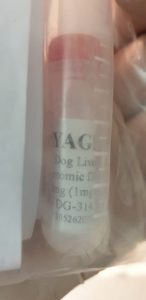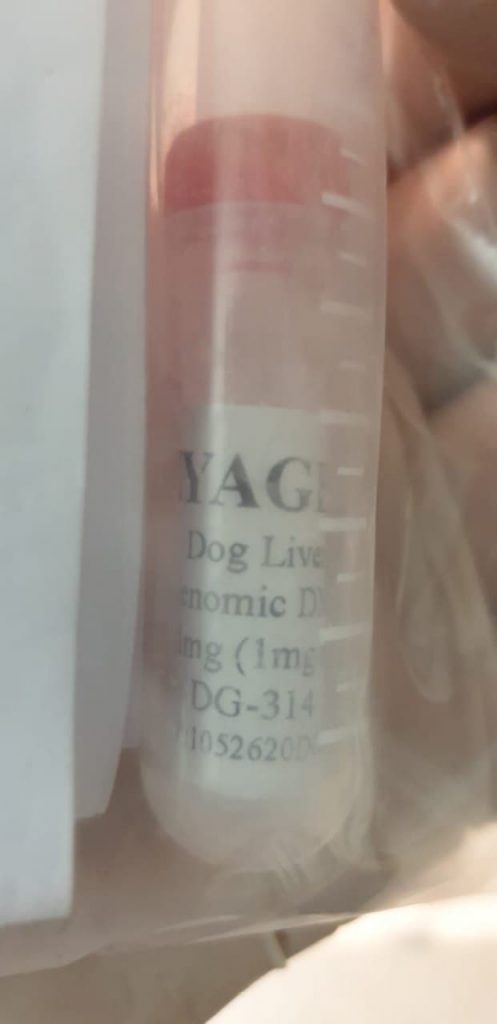The discovery of CRISPR/Cas9 has revolutionized molecular biology, and its affect on plant biotechnology and plant breeding can’t be over-estimated. In many plant species, its utility for mutagenesis is now a routine procedure–if appropriate goal websites, adequate expression of the Cas9 protein, and functioning sgRNAs are mixed. sgRNAs differ in their effectivity, relying on parameters which are solely poorly understood. Several software program instruments and expertise from rising databases are supporting the design of sgRNAs, however some seemingly good sgRNAs prove to be inefficient or fail totally, and most information bases stem from work with mammalian cells.
Different in vitro assays testing sgRNAs in reconstituted Cas9 complexes can be found and helpful to scale back the danger of failure, particularly in crops when CRISPR/Cas9 utility requires modifications throughout the germ line and laborious transformation protocols. Low sgRNA effectivity and lengthy technology instances in crops may contribute to the workload and prices of screening for the wished genome edits.
Here, we current a protocol in which a easy, preliminary in vitro check for appropriate sgRNAs is modified to speed up genotyping of Cas9-induced mutations. We exhibit applicability of our protocol for mutagenesis and mutation display screen for particular genes in Arabidopsis, however the precept needs to be universally appropriate to present a easy, low-cost, and fast methodology to establish edited genes additionally in different crops and different organisms.
Understanding the classics: the unifying ideas of transgressive segregation, inbreeding despair and heterosis and their central relevance for crop breeding
Transgressive segregation and heterosis are the explanations that plant breeding works. Molecular explanations for each phenomena have been instructed, and play a contributing position. However, it’s usually ignored by molecular genetic researchers that transgressive segregation and heterosis are most easily defined by dispersion of favorable alleles. Therefore, advances in molecular biology will ship essentially the most affect on plant breeding when built-in with sources of heritable trait variation – and this might be greatest achieved inside a quantitative genetics framework. An instance of the facility of quantitative approaches is the implementation of genomic choice, which has not too long ago revolutionized animal breeding.
Genomic choice is now being utilized to each hybrid and inbred crops and is probably going to be the main supply of enchancment in plant breeding observe over the subsequent decade. Breeders’ potential to effectively apply genomic choice methodologies is due to latest expertise advances in genotyping and sequencing. Furthermore, focused integration of further molecular information (reminiscent of gene expression, gene copy quantity and methylation standing) into genomic prediction fashions might improve their efficiency.
In this evaluate we focus on and contextualize a set of established quantitative genetics themes relating to hybrid vigor, transgressive segregation and their central relevance to plant breeding, with the purpose of informing crop researchers exterior of the quantitative genetics self-discipline of their relevance and significance to crop enchancment. Better understanding between molecular and quantitative disciplines will improve the potential for additional enhancements in plant breeding methodologies and so assist underpin future meals safety.
Structural variation in the human genome can have an effect on danger of illness. An instance is a fancy structural variant of the human glycophorin gene cluster, known as DUP4, which is related to a clinically important stage of safety in opposition to extreme malaria. The human glycophorin gene cluster harbours at the least 23 distinct structural variants, and correct genotyping of this advanced structural variation stays a problem. Here, we use a polymerase chain reaction-based technique to genotype structural variation on the human glycophorin gene cluster, together with the alleles chargeable for the U- blood group.
We validate our strategy, primarily based on a triplex paralogue ratio check, on publically out there samples from the 1000 Genomes mission. We then genotype 574 people from a longitudinal beginning cohort (Tori-Bossito cohort) utilizing small quantities of DNA at low value. Our strategy readily identifies identified deletions and duplications, and might probably establish novel variants for additional evaluation. It will enable exploration of genetic variation on the glycophorin locus, and investigation of its relationship with malaria, in giant pattern units at minimal value, utilizing customary molecular biology gear.

Fostering Conservation by way of an Integrated Use of Conventional Approaches and High-Throughput SPET Genotyping: A Case Study Using the Endangered Canarian Endemics Solanum lidii and S. vespertilio (Solanaceae)
slands present distinctive alternatives to built-in analysis approaches to research evolution and conservation as a result of boundaries are circumscribed, geological ages are sometimes exact, and plenty of taxa are drastically imperiled. We mixed morphological and hybridization research with high-throughput genotyping platforms to streamline relationships in the endangered monophyletic and extremely various lineage of Solanum in the Canarian archipelago, the place three endemic taxa are at the moment acknowledged.
Inter-taxa hybridizations had been carried out, and morphological expression was assessed with a common-garden strategy. Using the eggplant Single Primer Enrichment Technology (SPET) platform with 5,093 probes, 74 people of three endemic taxa (Solanum lidii, S. vespertilio subsp. vespertilio, and S. vespertilio subsp. doramae) had been sampled for SNPs.
[Linking template=”default” type=”products” search=”Magnesium Acetate Tetrahydrate for molecular biology” header=”2″ limit=”142″ start=”3″ showCatalogNumber=”true” showSize=”true” showSupplier=”true” showPrice=”true” showDescription=”true” showAdditionalInformation=”true” showImage=”true” showSchemaMarkup=”true” imageWidth=”” imageHeight=””]
While morphological and breeding research confirmed clear distinctions and a few steady variation, inter-taxon hybrids had been fertile and heterotic for vigor traits. SPET genotyping revealed 1,421 high-quality SNPs and supported 4, not three, distinct taxonomic entities related to post-emergence geological, ecological and geographic elements of the islands. Given the dearth of limitations to hybridization amongst all of the taxa and their molecular variations, nice care have to be taken in inhabitants administration. Conservation methods should take account of the sexual and breeding techniques and genotypic distribution amongst populations to efficiently preserve and restore threatened/endangered island taxa, as exemplified by Solanum on the Canary Islands.

